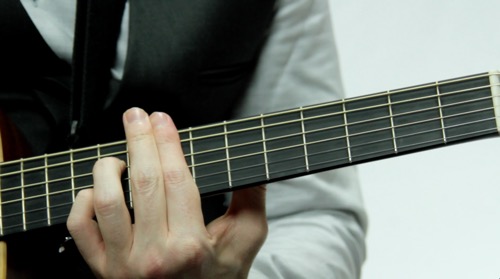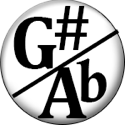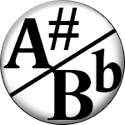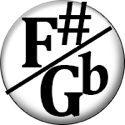Voice Leading Cycles 4 and 5

Hi. This is Hub Guitar.
We're going to talk about the cycles 4 and 5. This refers to a chord progression whose root motion follows the fifth or the fourth. For instance, if the root of each chord always goes up a fifth, that's called cycle five. If it always goes down a fourth, that's called cycle four.
In the key of B♭ major, a cycle five progression would just be the same diatonic chords we always play, but in this order: B♭ major, F7, C-7 and so on.
We're going to do this with drop 3 chords with a root on the fifth string, just to try something a little different.
We're also going to voice lead the progression. That means each chord will move to the nearest inversion of the next chord. For instance, if I go from Bbmaj7 to F7 in root position, I'm going to make this big jump:
That's not always going to give me a great sound, and it can be a little hard to play. Instead I'm going to move up to the second inversion of F7, whose root is C, which is very close by. Here's an example.
Now I'm going to do the whole example in Bb major.
So try using the cycle devoice your way through the chords and a number of keys and using as many different chord types as you know.
In chord progressions, a cycle is simpler than it sounds. It’s just when the root of the progression moves by the same interval until it repeats. Check our lesson on chord progression cycles if you’re not sure what this means.
Cycles 4 & 5
Voice Leading for Cycles 4 & 5
Cycles 4 & 5 have moderate voice leading potential. A triad in this cycle will share one note with its neighbor, and a seventh chord will share two notes with its neighbor.
Cycle 4
| B♭maj7 | E♭maj7 | A-7♭5 | D-7 | G-7 | C-7 | F7 |
Cycle 5 – (Cycle 4 Backwards)
| B♭maj7 | F7 | C-7 | G-7 | D-7 | A-7♭5 | E♭maj7 |
The Progression (Cycle 5)
B♭maj7, root position
F7, 2nd inversion
C-7, root position
G-7, 2nd inversion
D-7, root position
A-7♭5, 2nd inversion
E♭maj7, root position
B♭maj7, 2nd inversion
Key Exercises
- Learn, memorize, and apply the chord progression.
- Practice Cycle 4, which is the above example played in reverse.
- Start the cycle again, this time from the last B♭maj7 chord instead of the first chord. Because this is a different inversion of the B♭maj7 chord, the entire progression will be different. Can you figure out how to walk through the chord progression by moving two notes up at a time?
 As the creator of Hub Guitar, Grey has compiled hundreds of guitar lessons, written several books, and filmed hundreds of video lessons. He teaches private lessons in his Boston studio, as well as via video chat through TakeLessons.
As the creator of Hub Guitar, Grey has compiled hundreds of guitar lessons, written several books, and filmed hundreds of video lessons. He teaches private lessons in his Boston studio, as well as via video chat through TakeLessons.











